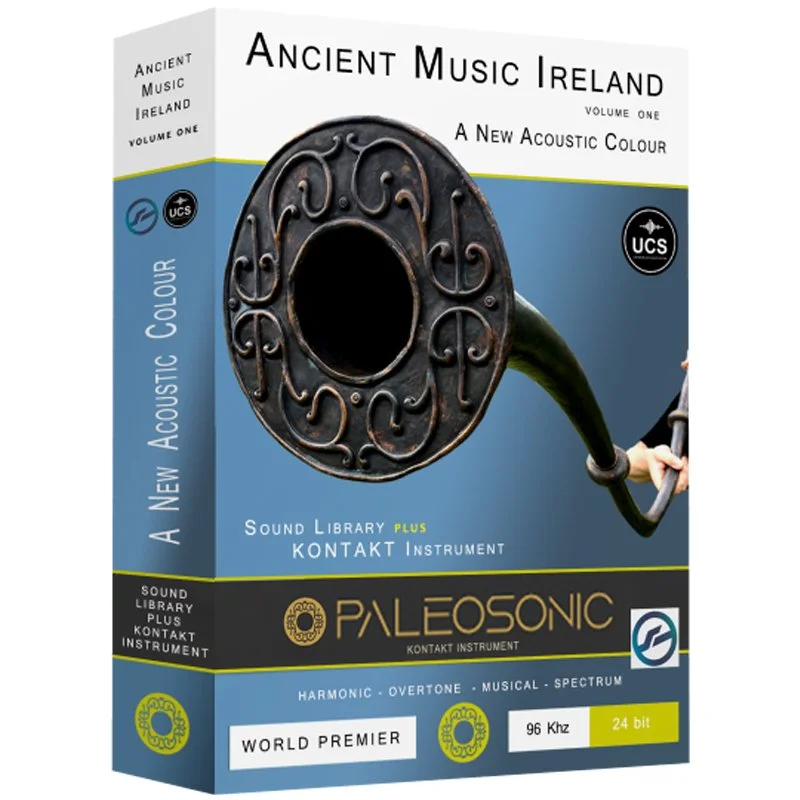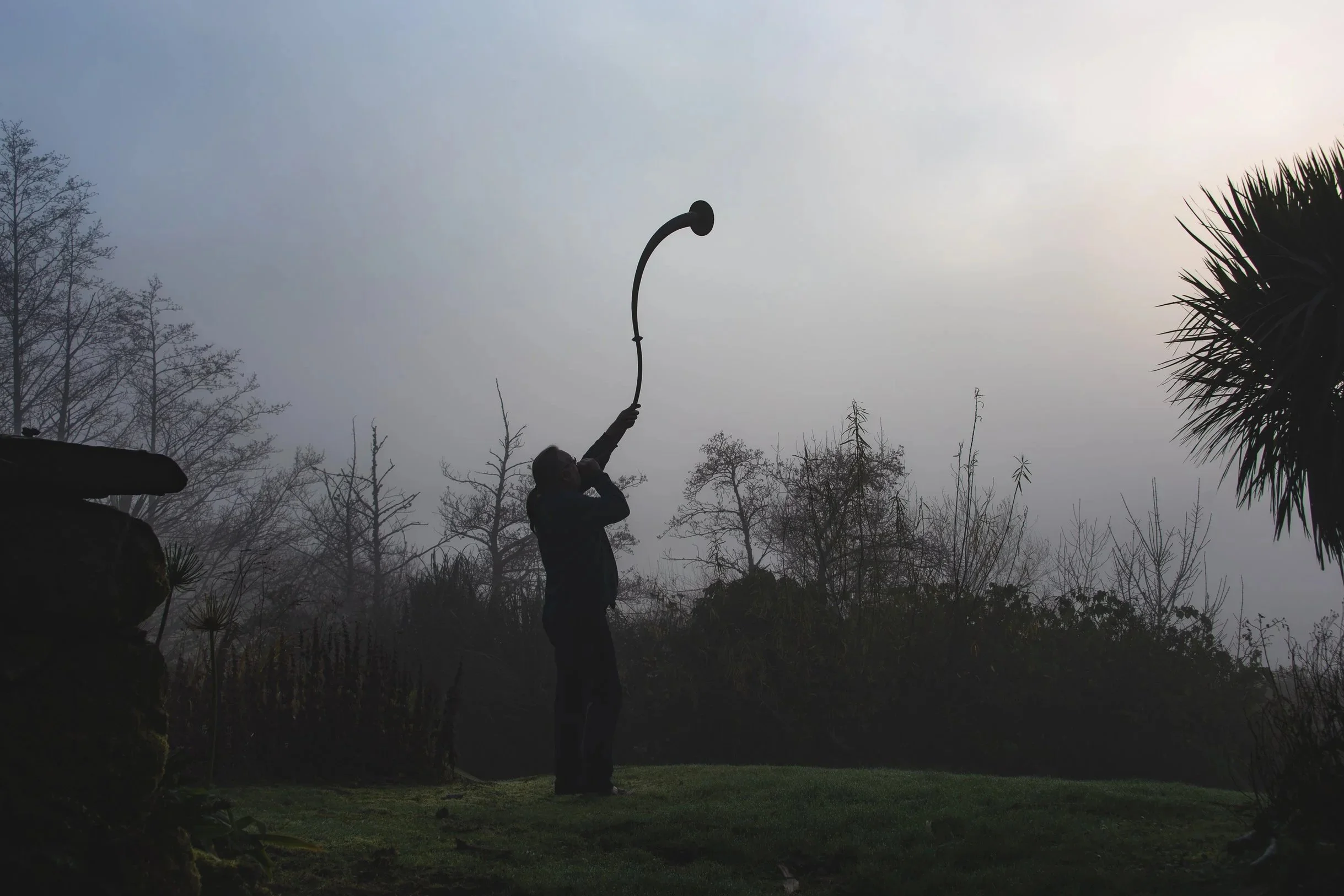At Sound Ark, we have are incredibly fortunate to collaborate with remarkable people on some truly fascinating projects. This is a fine example.
I first met Simon and Maria, founding members of Ancient Music Ireland, quite by chance. We were gathered in the canteen at Marble Arch Caves, grabbing a quick bite before the start of an unusual concert that I was about to record. Among the group of fine musicians, conversation turned quickly to our respective fields. When I explained my background in film sound, Simon and Maria mentioned they had been looking for a way to present their sounds to the audio-visual production community.
"Look no further!" I said.
A Collaboration Years in the Making
About a year later, Maria got back in touch. After several postponements due to travel restrictions and subsequent lockdowns, I finally made it to their home studio – a beautiful, remote spot tucked away at the end of a valley lane in the Mountains of North County Galway.
I arrived late at night and didn't see much at first. But when morning broke, I realised I was somewhere quite special.
Ancient Music Ireland, A Labour of Love
Simon and Maria have spent over 35 years researching, performing, producing, and promoting ancient musical instruments from Ireland and beyond. Their work is a true labour of love that sits at the intersection of art, history, and sound.
What they do blends experimental archaeology, experimental acousticology, instrument design, and musical performance. Their mission goes beyond music - it's about preserving our shared acoustic heritage: capturing how the world might have sounded thousands of years ago.
Their dedication to authenticity, craftsmanship, and sonic beauty has put them at the cutting edge of their field. And it's something we at Sound Ark feel deeply connected to.
The Recording Process
Capturing the unique sounds of these ancient instruments presented an exciting challenge. Here's a little glimpse behind the scenes:
Pre-Production
Pre-planned details were crucial: gathering names, photos, and as much information about the instruments and recording location as possible.
We aimed to record at the highest possible bit and sample rates to ensure maximum fidelity.
Recording Approach
Controlling the acoustics was key. We wanted a neutral sound, but we also embraced the natural acoustics of the valley and studio where appropriate.
Instruments were recorded with generous headroom - at least 6dB - avoiding any unnecessary compression or limiting. These are still musical instruments, not V8 engines!
Editing and Mastering
All "false takes" were kept; what may seem like a mistake could be gold in the right hands.
We avoided any heavy-handed spectral plugins, knowing that artefacts would become audible especially when samples are pitch-shifted later.
Great care was taken with editing: checking for unwanted clicks, especially after pitch manipulation, and ensuring clean waveforms at the tops and tails.
Lessons: Producing a Sound Library
From this project, a few golden rules emerged for anyone putting together a sound library:
Dynamic Headroom: Always leave room below 0dB, especially when planning to pitch-shift samples.
Spectral Checking: Use detailed spectrogram displays (like iZotope RX) to spot clicks and glitches.
Phone Discipline: Stay focused. A great trick I use: set up a time-lapse recording of your work session. It’s motivating and keeps distractions at bay.
Soft Rules for Kontakt Instruments: When building instruments for platforms like Kontakt, ensure dynamic integrity, avoid over-processing, and double-check pitched samples.
Bonus Tip: When pitch-shifting low by large amounts (like -24 semitones), give your samples extra margin at the start. Pitching low can "pull" audio backwards in time, sometimes creating unwanted clicks or truncations at the beginning of the file. This process of re-sampling can cause the beginning of the audio to be reinterpreted or to get cut off, creating a time-shift that results in clicks or truncated audio.
The Result: PALEOSONIC


The result of this collaboration is PALEOSONIC, an extensive sound library and fully playable Kontakt instrument featuring these ancient sounds.
You can purchase it directly from Ancient Music Ireland here:
👉 Buy PALEOSONIC Sound Library + Kontakt Instrument
Whether you’re a composer, sound designer, or music historian, this library offers a unique palette of prehistoric sounds ready to be explored.
Production Credits:
Production & Cover Design: Maria Cullen O'Dwyer
Instruments Performed By: Simon O’Dwyer
Production Advisor - Gerry Owens (Black Bag Music)
Kontakt Instrument Implementation and Design: Hadi El Hosri
Recording, Editing and Mastering: Angel Pérez Grandi
A Toast to Good People and Good Work
These recordings took place amid the COVID-19 pandemic, with all necessary precautions, face coverings, and distancing observed throughout. Yet at no point did it feel restrictive. Quite the opposite: Simon and Maria went above and beyond to create a smooth, enjoyable recording experience. Yet another small example that when we put our minds together - when we collaborate - we can do beautiful things.
As I said at the top, we have been lucky to work with kind, respectful people who are passionate about what they do. I can’t wait to hear these unique ancient sounds make their way into new worlds of storytelling and production.
Cheers to that and to future collaborations!
To finish, here is a little demo and behind the scenes video:





















